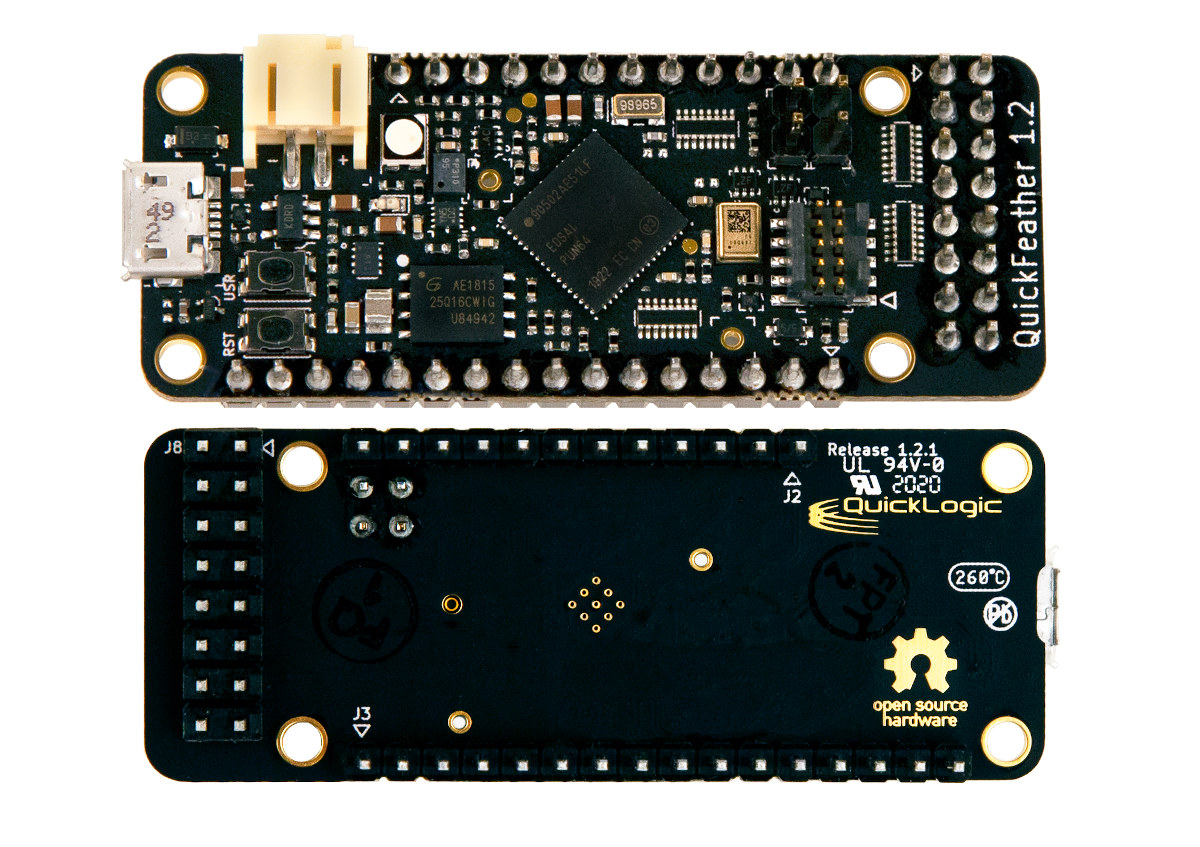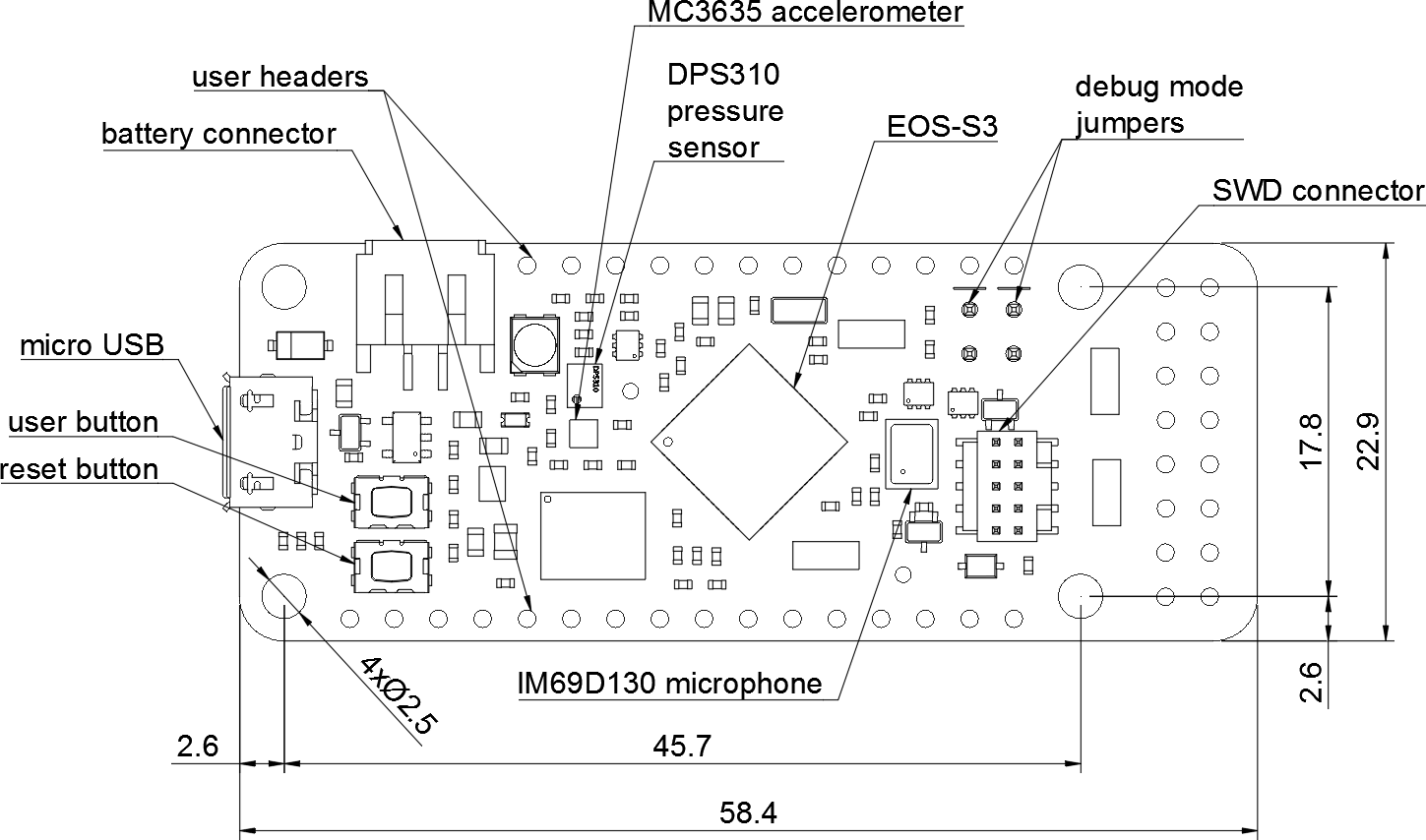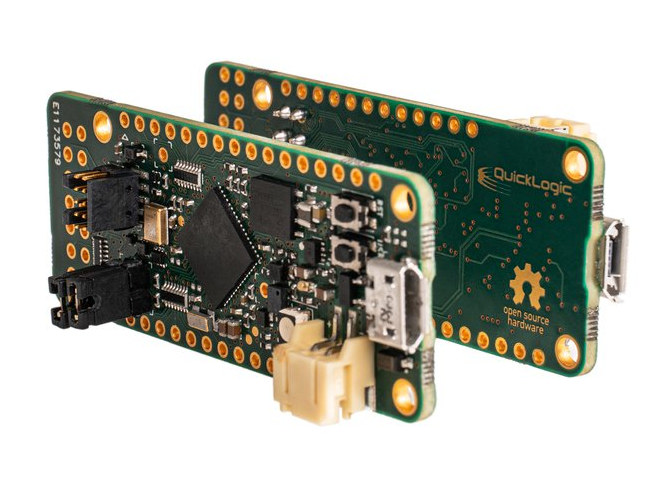Yesterday, I wrote about what I felt what a pretty unique board: Evo M51 board following Adafruit Feather form factor, and equipped with an Atmel SAMD51 Cortex-M4F MCU and an Intel MAX 10 FPGA.
But less than 24 hours later, I’ve come across another Adafruit Feather-sized Cortex-M4F board with FPGA fabric. But instead of using a two-chip solution, QuickLogic QuickFeather board leverages the company’s EOS S3 SoC with a low-power Cortex-M4F core and embedded FPGA fabric.
QuickFeather board
- SoC – QuickLogic EOS S3 with Arm Cortex-M4F Microcontroller @ up to 80 MHz and 512 Kb SRAM, plus an embedded FPGA (eFPGA) with 2400 effective logic cells and 64Kb RAM
- Storage – 16Mbit SPI NOR flash
- USB – Micro USB port with data signals tied to eFPGA programmable logic
- Sensors – Accelerometer, pressure sensor, built-in PDM microphone
- Expansion I/Os – Breadboard-compatible 0.1″ (2.54 mm) pitch headers including 20 Feather-defined GPIO + 13 additional GPIO with UART, I2C, I2S and SPI
- Debugging – SWD programming connector for use with USB-TTL converter
- Misc – RGB LED, user push-button, reset push-button
- Power Supply
- 5V via Micro USB port (regulated to 3.3 V)
- 2-pin JST connector + charging circuit for LiPo battery
- Dimensions – 58.4 x 22.9mm (Feather Form Factor)

QuickFeather has lower specifications than Evo M51 with a lower maximum MCU frequency, fewer logic elements, and less I/Os, but EOS S3 SoC allows more compact solutions, and there are more easily accessible 2.54mm pitch I/Os on the board since M51 board has to rely on 1.27mm pitch castellated holes to provide the higher number of I/Os.
Open-source hardware and software
One advantage of QuickFeather is its openness with the KiCad design files and other hardware and software documentation uploaded to Github. The board supports both QuickLogic fork of Zephyr RTOS, as well as FreeRTOS as part of the company’s QORC SDK that also includes sample code for getting started.

That’s for the code running on the Cortex-M4F MCU, but there are obviously tools for the embedded FPGA with SymbiFlow’s Verilog-to-bitstream tools, and the open-source Renode simulation and testing framework. The board is also suitable for machine learning by leveraging the on-board sensor, programmable logic, and low-power microcontroller with TensorFlow Lite machine learning tools and SensiML Analytics Toolkit to generate custom embedded AI algorithms.
QuickLogic has recently launched QuickFeather board on Crowd Supply with a symbolic $1 funding target. Rewards start at $59 for the board only with free shipping to the US and $9 to the rest of the world. Backers should expect shipping to start in mid-August 2020 a couple of weeks after the campaign has ended.

Jean-Luc started CNX Software in 2010 as a part-time endeavor, before quitting his job as a software engineering manager, and starting to write daily news, and reviews full time later in 2011.
Support CNX Software! Donate via cryptocurrencies, become a Patron on Patreon, or purchase goods on Amazon or Aliexpress





